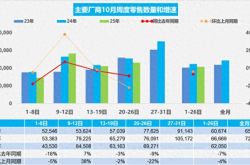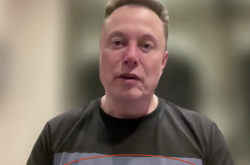Alibaba, JD.com, and Meituan's "Beachhead" in Instant Retail: A Tangible Manifestation of the Industrial Internet
![]() 07/11 2025
07/11 2025
![]() 424
424
The term "booming" aptly describes the current state of instant retail. At first glance, it may seem akin to past internet wars. However, to fully grasp its significance, we must transcend these superficial similarities and delve deeper. Only by doing so can we uncover the true essence and implications of this burgeoning sector.
Historically, internet wars were emblematic of the consumer internet era. By extension, the ongoing instant retail battle can be viewed as a tangible representation of the industrial internet. Indeed, this battle offers a vivid glimpse into the promising landscape of the industrial internet era, signifying its transition from concept to reality.
Therefore, when examining instant retail, we must avoid the pitfalls of limiting our analysis to the metrics and paradigms of the consumer internet. Instead, we should elucidate the link between instant retail and the industrial internet, using the former as a lens to understand the broader context of the latter. This perspective transforms instant retail from a mere subset into a novel entity with unique significance.
The crux of instant retail lies in "inventory."
If we encapsulate the consumer internet era, it is marked by the pursuit of "increments" through traffic and capital dividends. Those who identified and leveraged these increments emerged victorious. However, as these dividends wane, the increment-driven model becomes unsustainable. Rising traffic costs and diminishing capital dividends signal the waning of the consumer internet era.
Instant retail, with its burgeoning player base, initially appears to herald new increments. However, a closer inspection reveals that competition is centered around preserving one's own traffic—essentially, a battle for inventory. Players' growth is predicated on competitors' decline, marking a shift from increment-driven to inventory-driven growth. This shift heralds the advent of the industrial internet era, where players must innovate to win inventory, showcase differences, and undergo transformative changes—precisely the aim of the industrial internet.
The ultimate goal of instant retail is "industrial transformation and upgrading."
Without it, relying solely on marketing strategies, instant retail will falter in achieving long-term sustainability. Therefore, we must view instant retail through the lens of "industrial transformation and upgrading" rather than mere "industrial scale growth." Essentially, instant retail serves as a lever for facilitating industrial transformation and addressing challenges previously intractable in the consumer internet era.
Conversely, the emergence of new players in an apparently monopolized instant retail market underscores the importance of "industrial transformation and upgrading." This process, which epitomizes the essence of the industrial internet, is crucial for unlocking new opportunities in established markets.
When the focus of instant retail—industrial transformation and upgrading—aligns with the core feature of the industrial internet, instant retail ceases to be a mere replica of the consumer internet. Instead, it becomes an integral part of the industrial internet, enabling players to realize their true potential. With industrial transformation and upgrading achieved, the industrial internet era unfolds naturally.
From the perspective of "industrial transformation and upgrading," instant retail, though confined to a smaller commercial context, aims to achieve what the industrial internet envisions. Thus, instant retail is a subset of the broader industrial internet paradigm. This perspective highlights the need for "industrial transformation and upgrading" across diverse scenarios and industries, paving the way for the industrial internet era.
The underlying logic of instant retail lies in the "integration of platforms and entities."
Viewing instant retail through the lens of traditional consumer internet business models confines it within that paradigm. To unlock its true potential, we must transcend these limitations and adopt a fresh perspective. The core logic of instant retail is that players seek not just to be platforms but to explore new avenues for integrating platforms and entities.
Historically, online and offline platforms competed fiercely for traffic, leading to fragmentation. Over time, it became evident that online and offline platforms possess unique attributes, necessitating a shift from competition to integration. The integration of online and offline platforms, a hallmark of the industrial internet, is essential for overcoming the challenges of separation and fragmentation.
While instant retail operates online, current platforms are no longer detached from offline entities. Through data, logistics, and technological enablement, they seek integration with offline entities. This transformation turns online and offline players from competitors in the consumer internet era into partners in the industrial internet era. The integration of online and offline platforms is no longer theoretical but a tangible reality, embodying the underlying logic of instant retail.
This perspective reveals instant retail as a model for platform-entity integration, aligning with the industrial internet's aspirations. By exploring instant retail, we may uncover more effective methods for online-offline integration, bringing the industrial internet closer to fruition.
Final Thoughts
Viewing instant retail solely through the consumer internet lens fails to capture its full essence. Instead, it serves as the first beacon illuminating the industrial internet's potential. Through instant retail, we glimpse the alluring landscape of the industrial internet era. As more industries and scenarios undergo transformation and upgrading, the industrial internet will transition from a spark to a raging fire, unveiling its abundant dividends and boundless imagination. (End)








